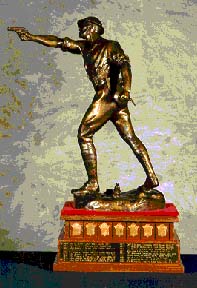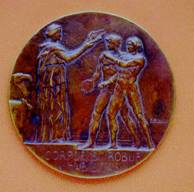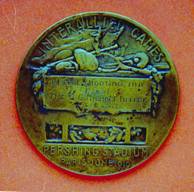General John J. Pershing, Commander of the American Expeditionary Force in World War I, first presented the Pershing Trophy for team competition at the Inter-Allied Games. The trophy was won by the American Expeditionary Force and was returned to the U. S. where it became a National Trophy.
The CMP recently had a medal donated to it that was awarded during the 1919 Inter-Allied Games. The medal indicates that it was awarded to M. E. S. G. Michael Kelley of the United States for Individual Pistol Shooting.
The Inter-Allied Games were initiated by General Pershing in January 1919, less than two months after the end of WWI, when he sent letters of invitation to 29 allied nations and territories. 18 accepted the invitation to compete in Pershing Stadium in Paris that was build for the games.
A commission that was set up to determine the sports to be contested decided to include rifle and pistol shooting. The CMP does not have detailed information about the specific sports and shooting events that were contested.
The games apparently were well run and became an organizational example that was a precursor to modern Olympic Games organizations. Available records indicate that American soldiers won most events including the two shooting events that are commemorated by this medal and Pershing Trophy.
The CMP would be interested in knowing whether any First Shot readers can guide us to more detailed information about the 1919 Inter-Allied Games and especially about the shooting events that were in those games.

The Pershing Trophy, originally presented by General John J. Pershing for team competition in the 1919 Inter-Allied Games in Paris, was won by a U. S. team and returned to the U. S. where it became part of the National Trophy

The front side of the 1919 Inter-Allied Games medal bears the Latin inscription “corporus robur et habilitas.”

The rear side of the Inter-Allied Games medal had a space for engraving the event, place finish, name and country of the medal winner.